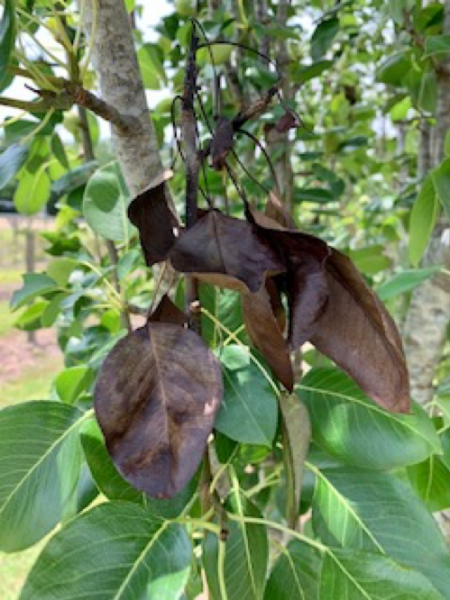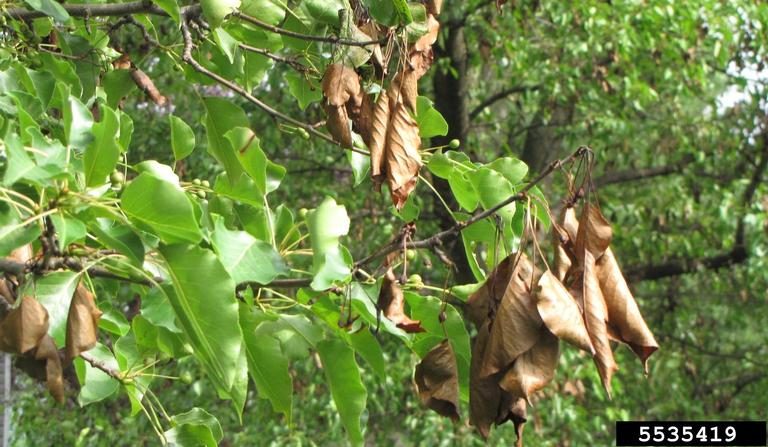Crop Production

Fire blight is a bacterial disease that affects apples, pears, and other fruit and ornamental plants. The term fire blight describes the blackened, burned appearance of damaged flowers, twigs, and foliage. Badly diseased trees and shrubs are usually disfigured and may even be killed by fire blight. These symptoms appear in early spring.
Control Options
 A control program combining resistant varieties, sound cultural practices, sanitation, fertilization, and pesticides is needed to protect plants from fire blight.
A control program combining resistant varieties, sound cultural practices, sanitation, fertilization, and pesticides is needed to protect plants from fire blight.
The best way to reduce the chances of fire blight is to purchase varieties of apple and pear trees that have some resistance to the disease. Aside from planting resistant varieties, there are other steps grower should take to prevent this disease.
Having proper cultivation and fertilization management practices is key to prevention. Do not cultivate pear and apple orchards late in the season and do not severely prune susceptible cultivars. Growers should regulate plant growth and apply fertilizers so that moderate shoot growth is maintained. Beginning in late winter to early spring and continuing through the growing season, growers should remove all root sprouts and suckers from trees. Having improper practices that produce rank, succulent growth with increase the possibility of the disease developing.
If a tree is infected with fire blight, all diseased tissue (blighted twigs and branches) should be removed as soon as possible to slow the spread of the disease. Growers should prune diseased wood approximately 12 to 14 inches below visible cankers during the growing season. In fall or winter, prune the diseased wood 6 to 8 inches below the cankers. After each cut, clean all tools with a solution of isopropyl alcohol or other disinfectant to avoid spreading the bacteria.
More information can be found in the Integrated Management Guide for Commercial Apples in the Southeast.
Featured image from Penn State Department of Plant Pathology & Environmental Microbiology Archives , Penn State University, Bugwood.org

